How to Paint Rusty Buckets In Watercolour step by step
Here is a wonderful in depth watercolour step by step by artist John Fisher. Enjoy and happy painting!
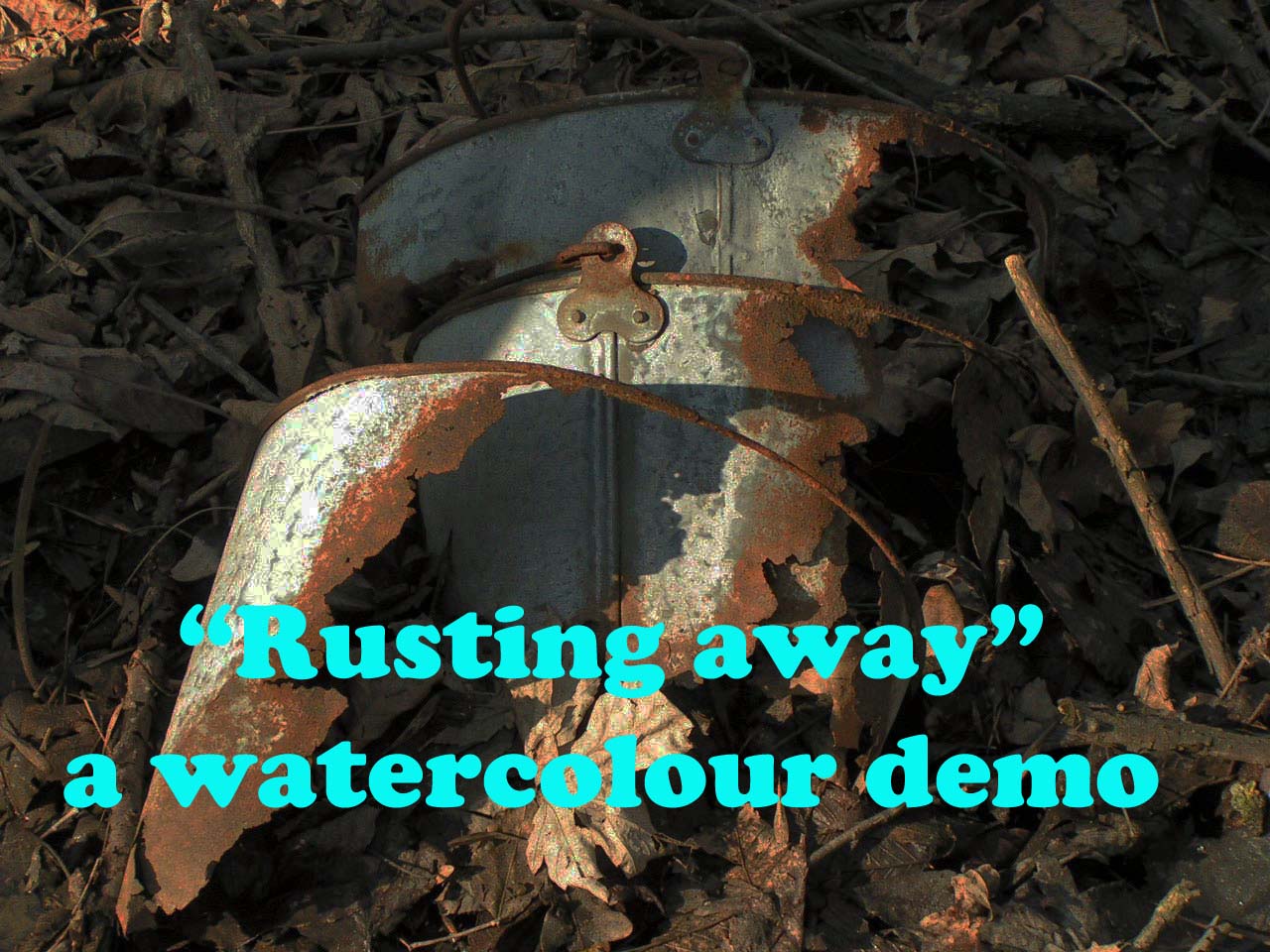
A partial watercolour demo of a complex subject requiring many different techniques.
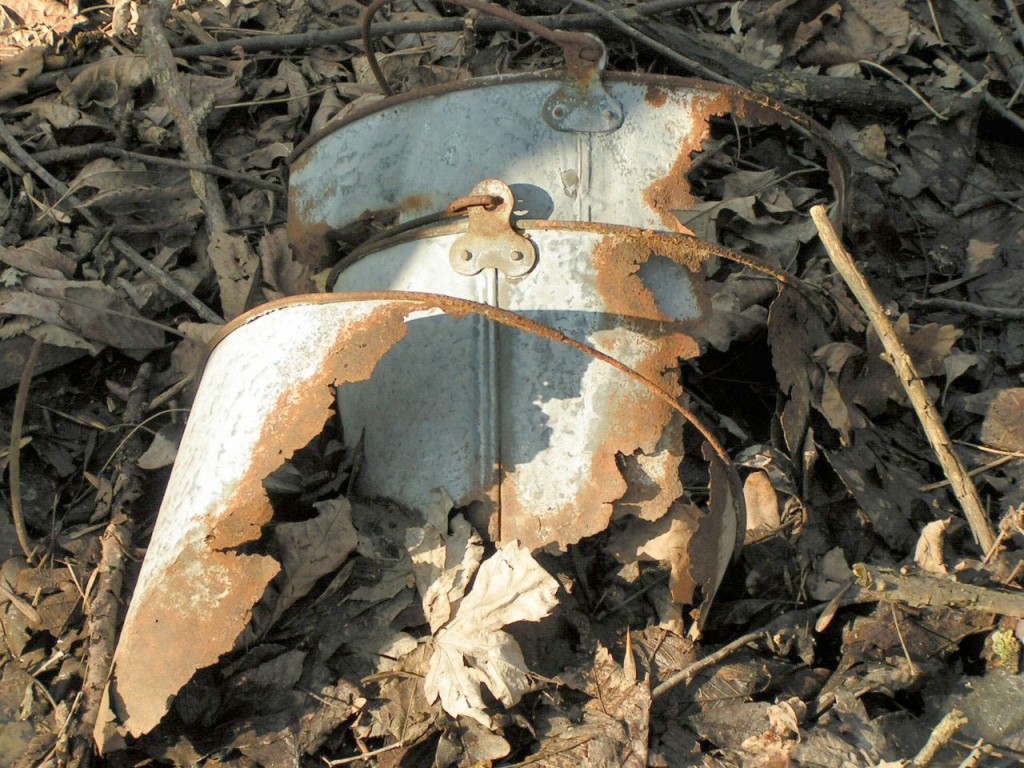
This beautiful photograph used by kind permission of Celeste Bunting, posted on Paint My Photo April 13, 2012. This almost abstract photograph was a tempting watercolour and suggested by Robyn Lovelock (Oh boy – what a friend!), but as you will see, it got away from me in spite of my best efforts. Image size 11″x 14″ on Arches 300 lb. cold press paper, using Winsor & Newton Artist Quality colours.
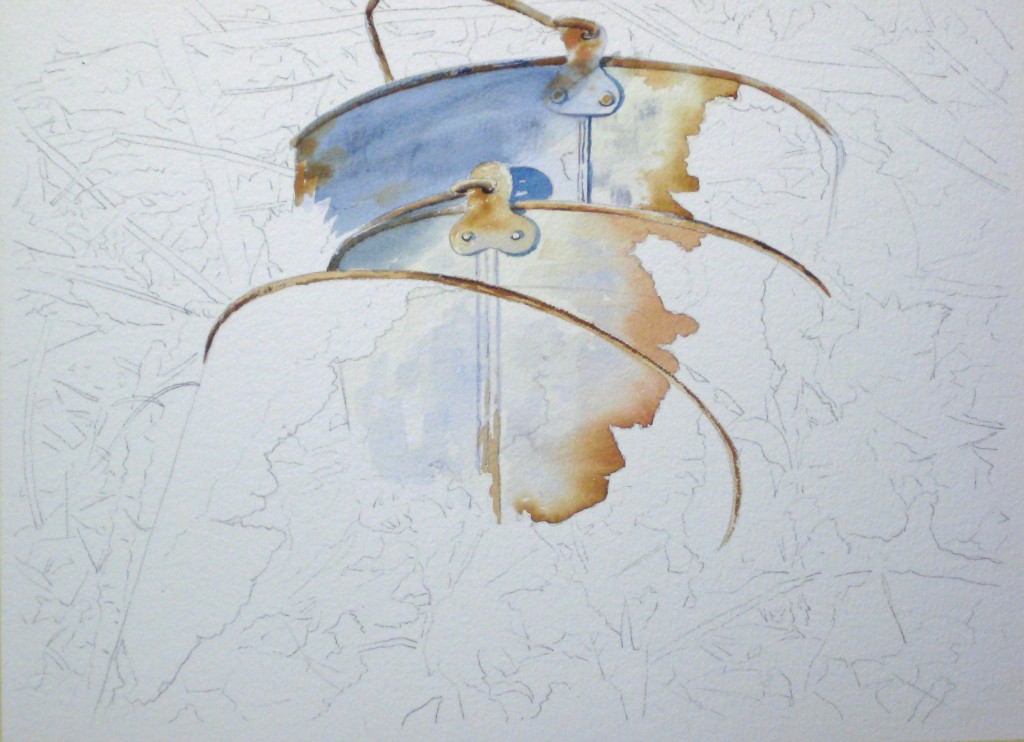
I hadn’t intended on doing a step-by-step of this subject, as I thought I would dash this off as a “quickie” and something I would enjoy just for fun. Ha! Pride goes before a fall indeed. After transferring the image to paper I decided to leave out the brightly lit stick on the right-hand side as being too obtrusive. I was undecided about whether to do the leaves first and then the rusty pails, but decided to do the pails first. I soon discovered how complex this painting was going to be. No “quickie” this.
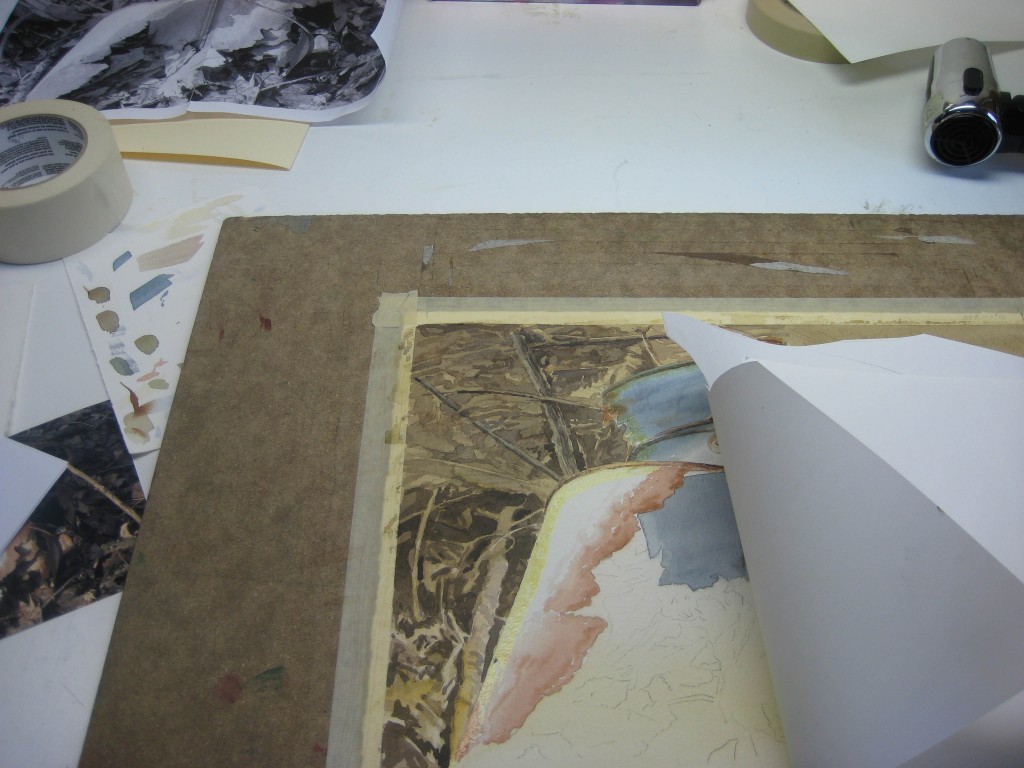
I found the background leaves so utterly confusing I used a technique which sometimes helps. I used paper to mask off everything but the section I was trying to paint. I felt if I could get this section right, I would have less trouble later on. Ha! What a mess.
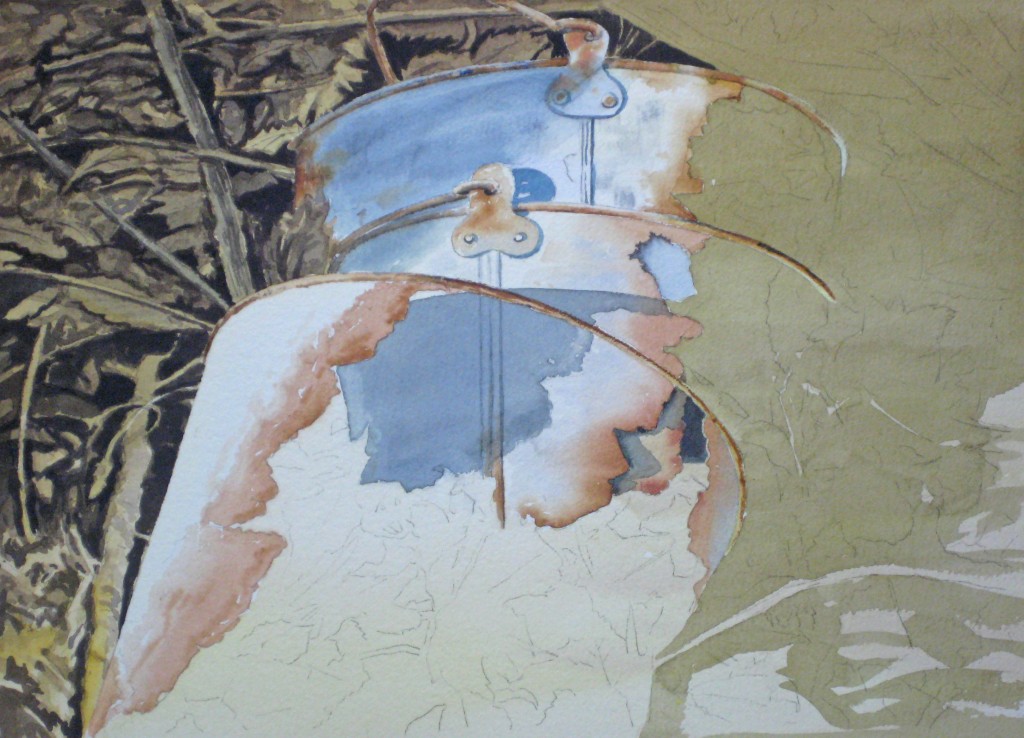
Plunging on I completed my little section then stepped back to view what I’d done. Maybe not as bad as I first thought?
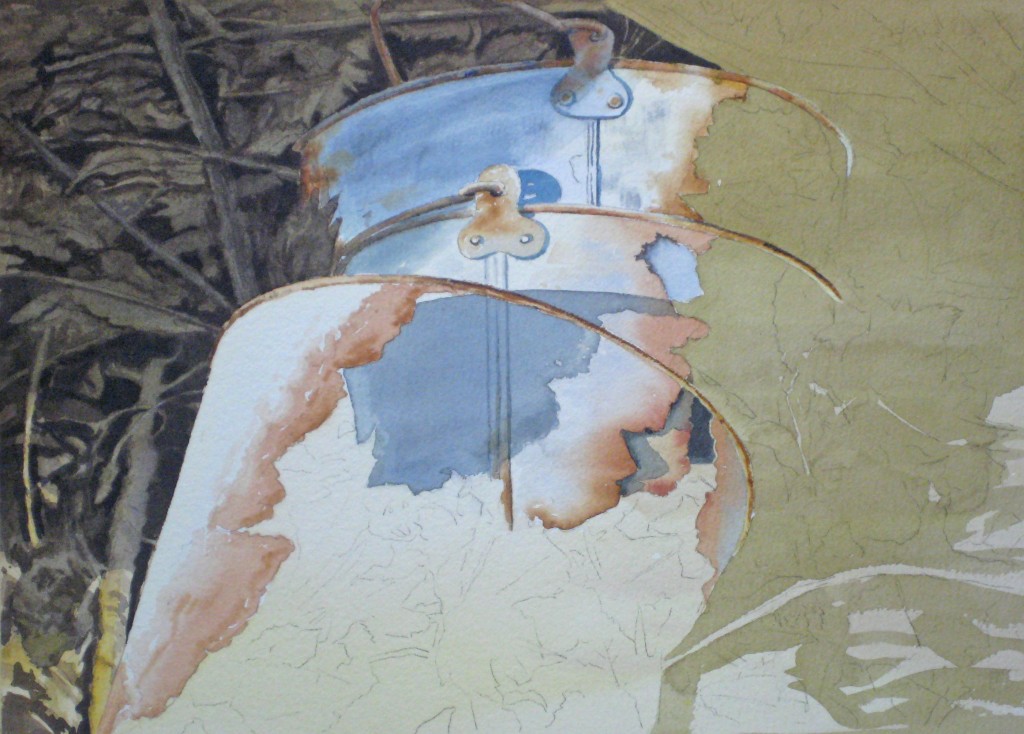
Then a wrong decision. Instead of waiting until the whole background area was painted, I was impatient to see how it would look with its shadows intact. To my dismay I found it might be too dark. Never mind, press on and hope for the best. In fact I had lost control of the project at this stage and my “quickie” was not as much fun any more.
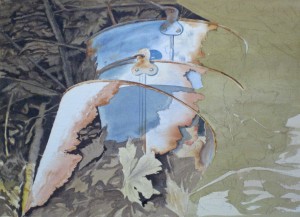
I put this aside for a day or two and came back fresh to my “quickie”. I decided to map in the area at the bottom too see if I could balance the darker areas. My basic leaf colour had been a wash of Burnt Umber, a touch of New Gamboge and a touch of my standard shadow colour made from Antwerp Blue and Brown Madder. I began using my darkest tone made from Antwerp Blue, Brown Madder and a touch of Winsor Blue. I usually leave my darkest tones until the end but I wanted to make sure I could save this mess.
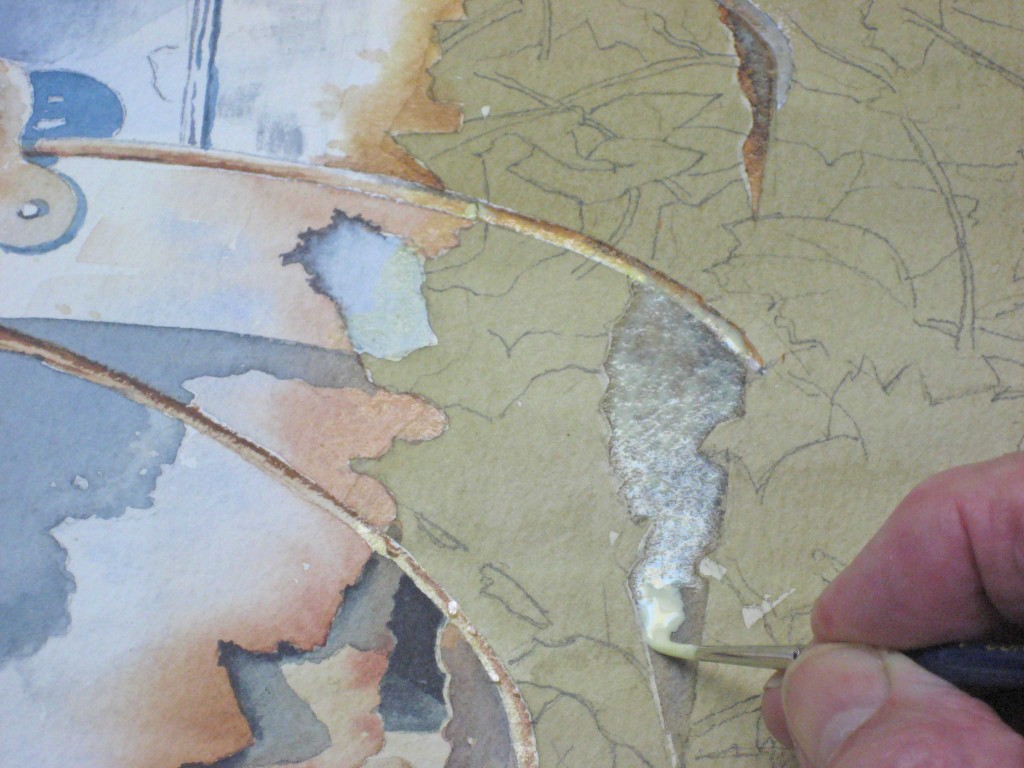
Next I masked off appropriate areas with liquid masking so I could freely paint in my remaining leaves using a combination of wet-in-wet and other techniques.
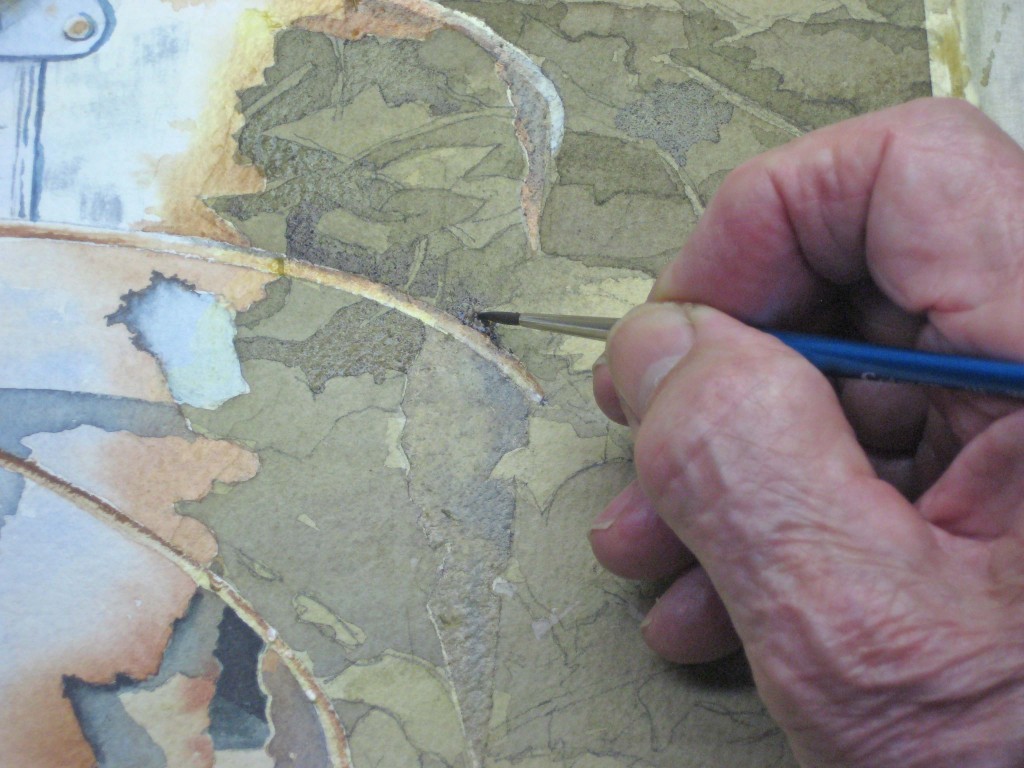
I began building up my layers of negative painting, dropping in the odd touch of darker tones wet-in-wet. The background was so confusing I decided not to worry about accurately reproducing the leaves as they were in the reference photograph, but take advantage of shapes as they developed.
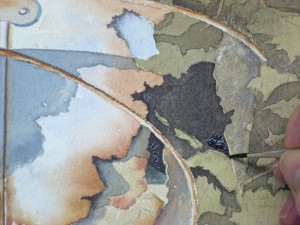
To help me with this confusion of shapes, colours, shadows and reflected light, I broke with my tradition of painting from light to dark and put in the darkest shadows to help me sort things out.
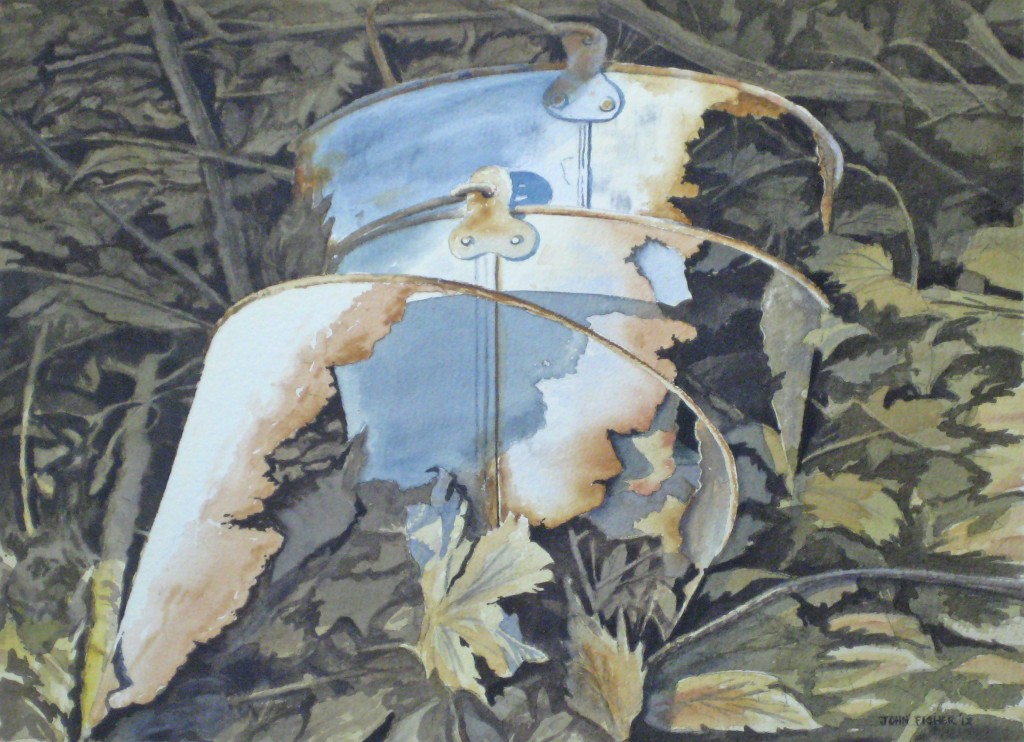
I’ve jumped ahead quite a bit here as I got wrapped up in sorting out the confusion of leaves and light source, and forgot all about photographing the stages. I left this alone over a weekend and came back to put the finishing touches to extra dark areas and clean up one or two mistakes. My “quickie” watercolour turned out to be quite a challenge, but not the disaster I feared.
About John Fisher
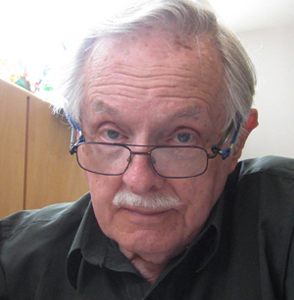
I was born and educated in England, graduating from the Luton School of Arts (now Barnfield College) in 1945. It was my hope to become a graphic artist, but at the end of the Second World War returning service men and women had first crack at the few jobs available, and rightly so. I took a number of jobs while I tried to break into my chosen field, and ended up being a reluctant carpenter. Many years passed and I emigrated to Canada in 1952, married a Canadian woman, started a family, and in 1955 finally started on a career which took in graphic arts, owner of my own graphics arts company, art director at an advertising agency, and careers in marketing, advertising and public relations.
I wish I could claim that my passion for art burned brightly throughout those years, but alas, the need to make a living took prominence. As with many people, I always promised myself that when I retired I would get back to painting again. That time came in 1989, when my wife and I were living the winter months in our condo in Destin, Florida. Robert Long, a talented watercolour artist, was offering private lessons from his nearby condo. He was my mentor, and made my retirement years infinitely richer.
In those days Robert taught only technique, and there were rarely more than four to six of us in those early classes. From Robert I regained my interest in photography as an adjunct to painting, and as the cliche goes – I never looked back. I have had many paintings accepted and hung in exhibitions in Florida and Ontario, where I now live. I’ve won some prizes, come first in some exhibitions, and occasionally won the Citizens’ Choice awards. But I mainly paint for fun – hence the choice of name for this site.
To learn more about John and to view more of his work, please follow the link below:
Leave a Reply